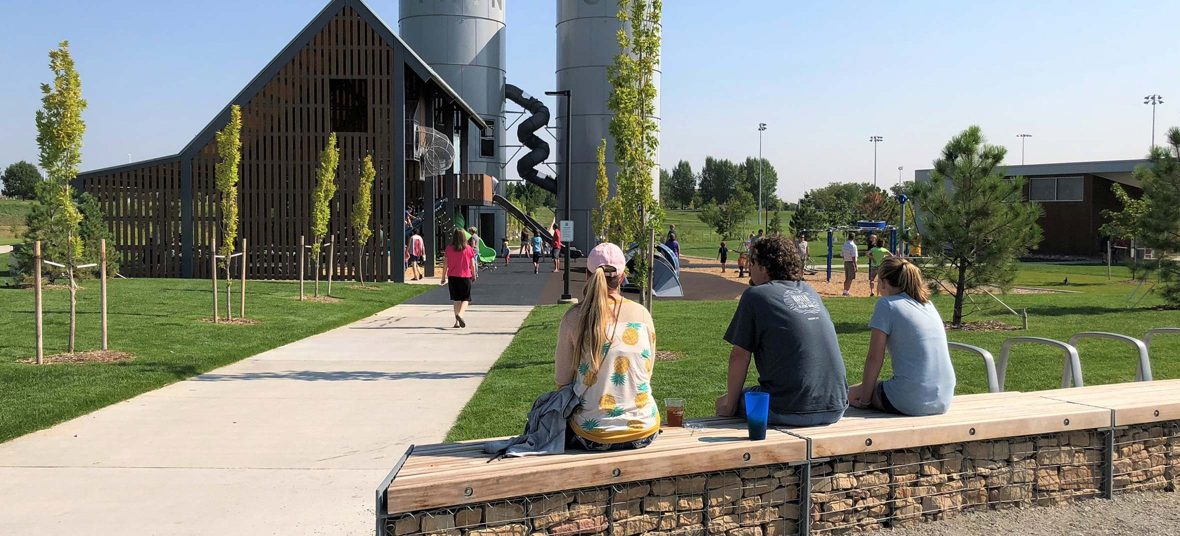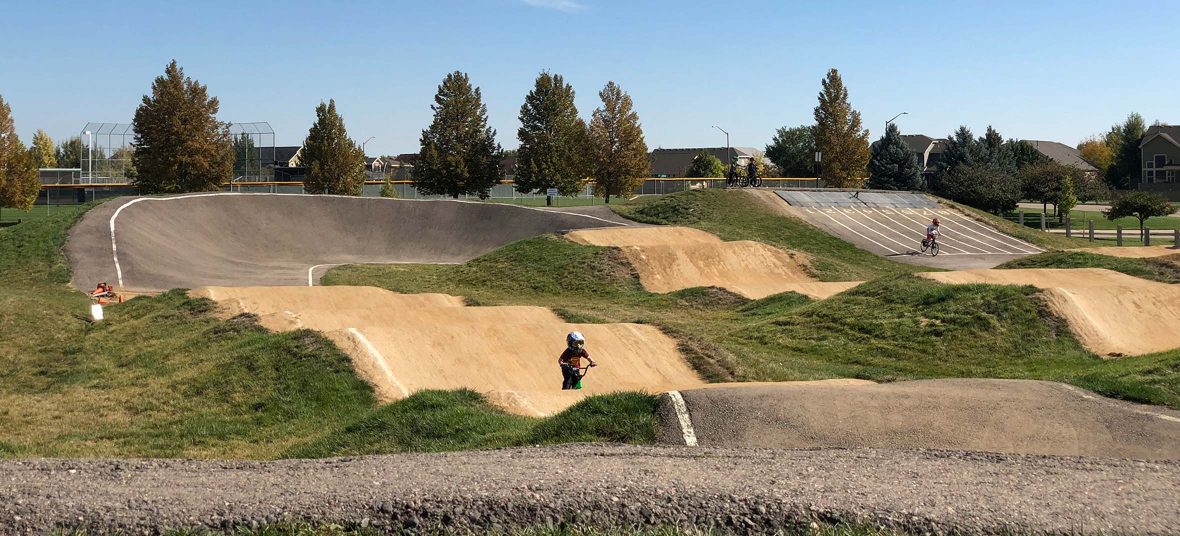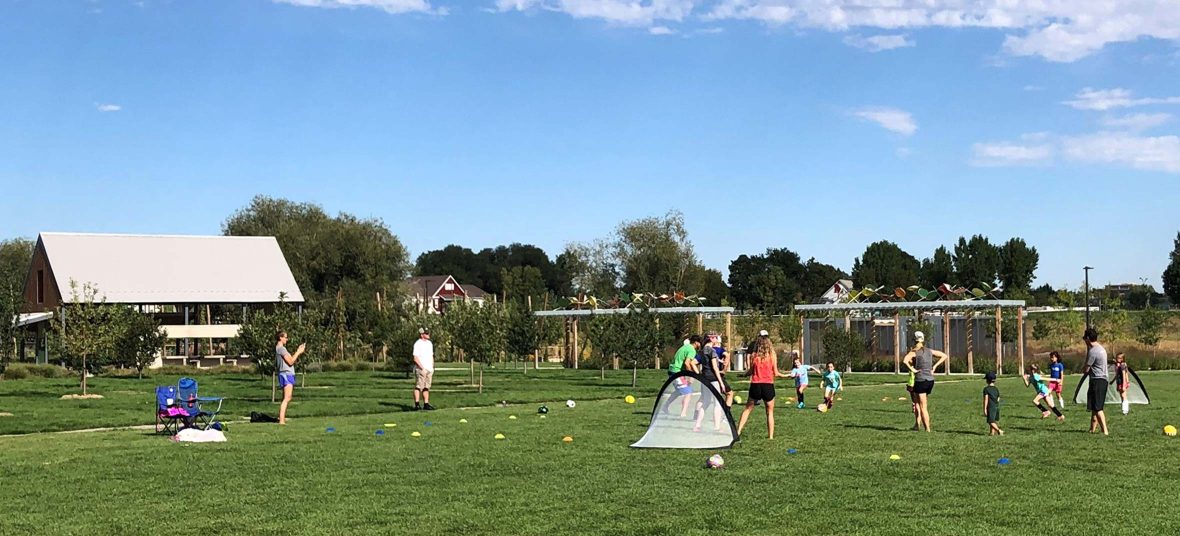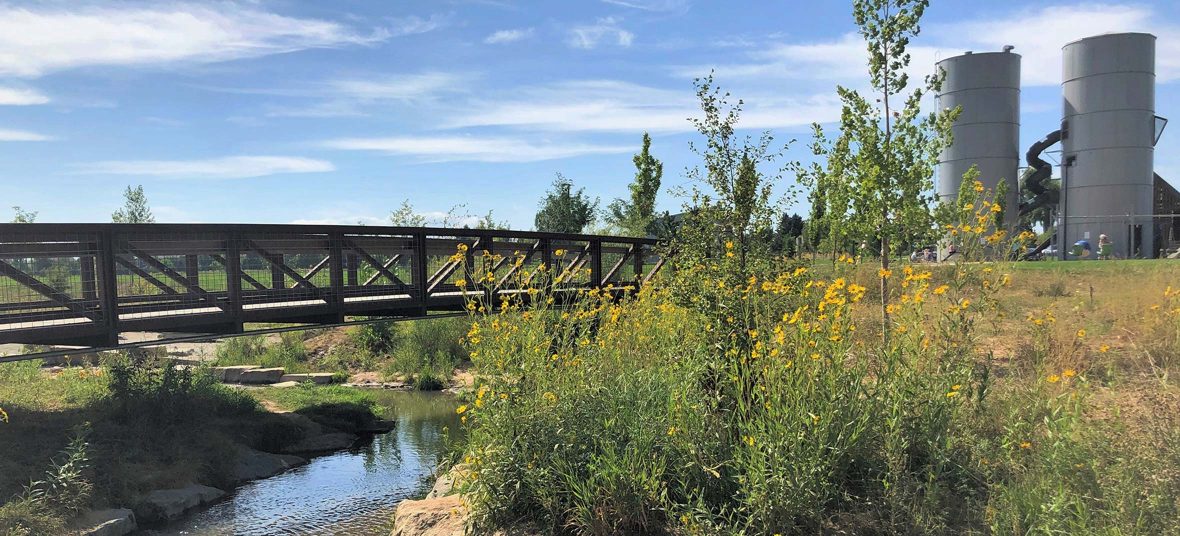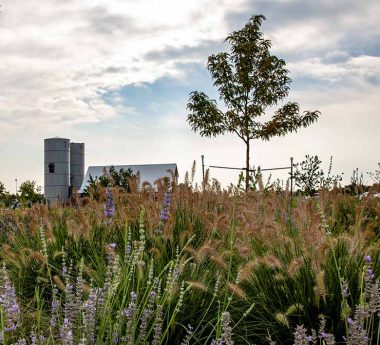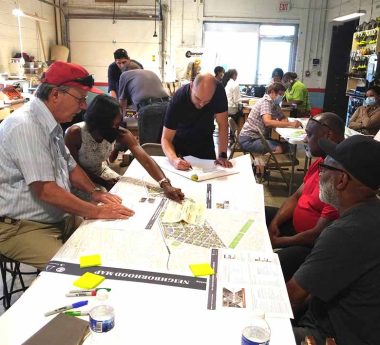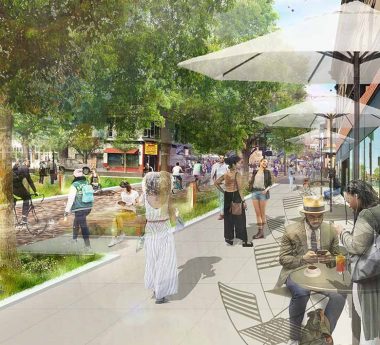When Twin Silo Community Park opened in 2017, it checked all the boxes that Fort Collins, Colorado, needed in order to provide residents and visitors a wide variety of spaces and amenities for recreation:
- Paved recreation trails
- Pickleball courts
- Baseball and soccer fields
- Playground
- Dog park
- Community garden
- Picnic shelters
- Restrooms
But simply “checking the boxes” is never enough when the goal is to create a place that is not only sustainable and relevant for years to come, but also truly embraced by the community as their own. Fortunately, the City of Fort Collins has a wonderful reputation of being responsive to residents, and the city’s Director of Park Planning and Development, Kurt Friesen—himself a landscape architect with a design industry background—understood that project success required a highly integrated team with long-term vision and strong partnerships.
In fact, the Twin Silo project—a revamp of 54-acres of city-owned land previously known as Southeast Park—was a long-term effort, due in large part to a shift in project leadership that occurred after much of the new park had already been designed but not yet fully embraced. This shift enabled the team to reengage the Fort Collins community and ensure that their needs and concerns were legitimately heard and addressed. Public meetings were held at Fossil Ridge High School, which sits on the north edge of the Twin Silo site, so we knew the right and most relevant audience was present. We also had numerous one-on-one conversations with a variety of residents and other stakeholders, and during each conversation we listened carefully and tried to make clear our earnest willingness to reboot.
Common feedback underscored the community’s concern that they would be losing natural, open space to sports fields and courts that would be overprogrammed and brightly lit. Fortunately, this wasn’t the city’s goal, nor Civitas’. Nature, and the community’s relationship with it, would always be our focus.
Fort Collins has a strong agricultural heritage, and a family-owned farmhouse and barn that once stood on the site of the high school became a design inspiration. Another opportunity arose when a nearby road-widening public works project, at the intersection of Prospect and Timberline Roads, required five silos to be removed. Two of them were claimed for this project and rebuilt onsite, giving the project it’s “Twin Silo” name. Collaborator Cre8play implemented the park’s play space components and retrofitted the two 48-foot silos with a double-helix spiral stairway and a giant spiral slide—the tallest slide in Fort Collins. A combine harvester was also built into the play equipment.


